Short skis are making freeride skiing easier and more fun in 2025. If you're new to off-piste skiing, here's what you need to know:
- Why Short Skis? They're lighter, easier to control, and portable enough to fit in a backpack. Perfect for beginners or anyone wanting to explore untouched terrain without the hassle of long skis.
- Best Options: Snowfeet* Skiblades (65–120 cm) and Skiskates (44 cm) offer agility, reduced learning curves, and versatility for powder or tight trails.
- Key Features: Compact design, snowboard-style bindings, and compatibility with regular winter boots. Prices range from $390 to $490.
| Feature | Traditional Long Skis | Snowfeet* Skiblades | Snowfeet* Skiskates |
|---|---|---|---|
| Length | 160–200+ cm | 65–120 cm | 44 cm |
| Maneuverability | Harder to turn | Easy to control | Extremely agile |
| Portability | Bulky, needs roof racks | Fits in standard luggage | Fits in a backpack |
| Learning Curve | Steep | Beginner-friendly | Simplest to learn |
Pro Tip: Start with 65 cm Skiblades if you're a beginner, or try Skiskates for ultra-portability. Adjust your stance, focus on edge control, and practice on easy slopes to build confidence.
Ready to hit the slopes? Snowfeet* makes off-piste skiing more accessible, portable, and fun for everyone.
How To Choose Your Freeride Skis | Salomon How-To
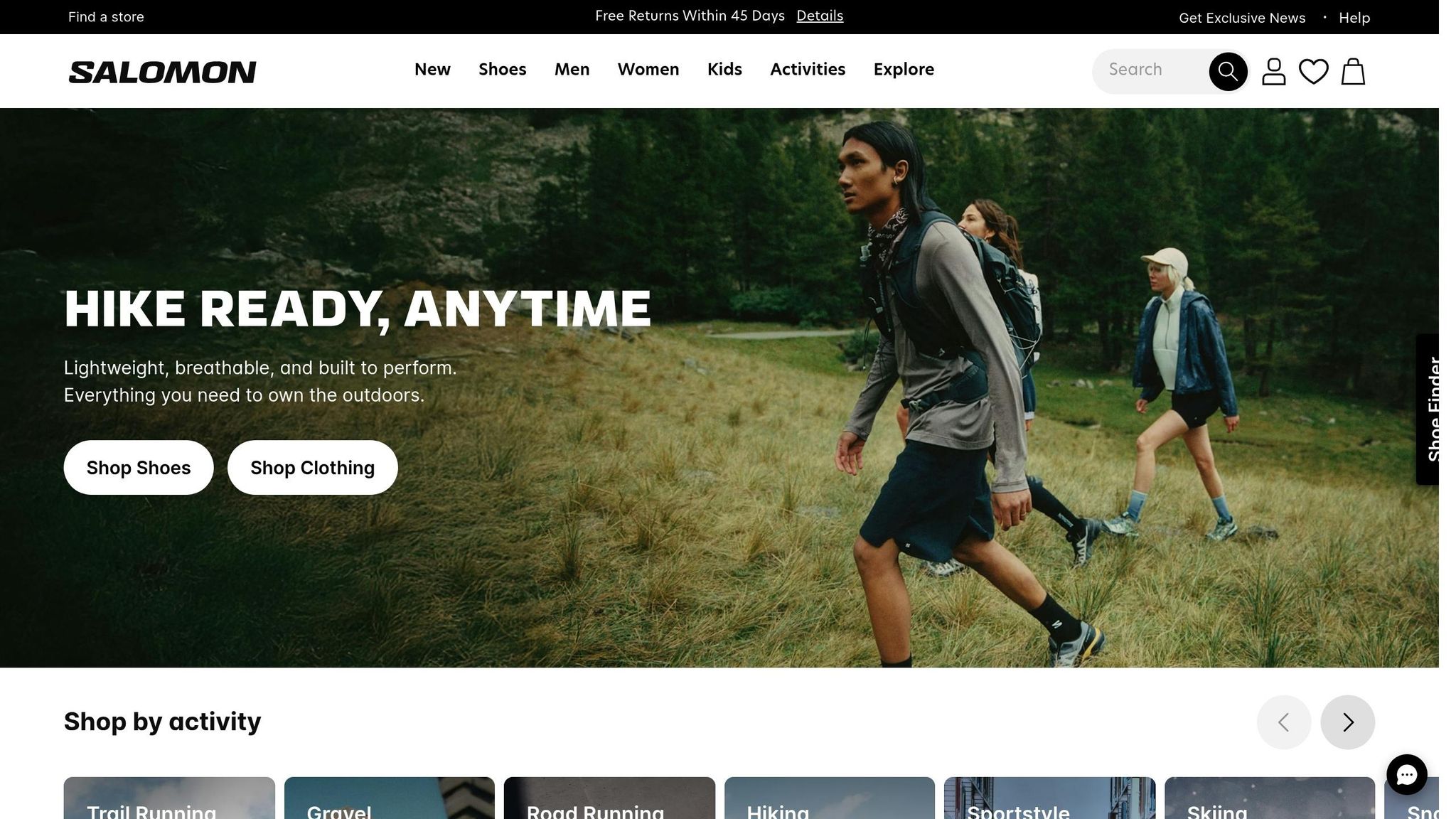
Key Factors to Consider When Choosing Freeride Skis
Picking the right freeride skis for off-piste adventures is all about finding the sweet spot between performance and practicality. Unlike the predictable groomed slopes, off-piste terrain throws everything at you - deep powder, uneven surfaces, and unpredictable snow conditions. Your gear needs to be ready for it all.
Maneuverability, Stability, and Float in Powder
When you're weaving through trees or gliding over fresh powder, maneuverability is key. Freeride skis, like those from Rossignol or Atomic, often have waist widths between 90–110 mm. While this width provides solid flotation, it can sometimes make the skis less agile. That’s where rocker designs come in - a tip rocker helps you float through powder and smooths out bumps, while a tail rocker boosts control and makes turning easier.
"I normally choose freeride skis depending on the terrain I'm going to be on. For powder, I go for a bigger waist. If you want to ski all around or in a place where it's not just powder, I go for a smaller waist." - Lovisa ROSENGREN
Snowfeet* products take a different approach. Instead of relying on length for powder performance, they use optimized width-to-length ratios to achieve great float with more agility. This design not only improves handling but also makes transportation a breeze - perfect for backcountry adventures.
Portability and Lightweight Design
Traditional freeride skis can be a hassle to transport. Their length often means roof racks, oversized luggage fees, and awkward handling during travel. If you're heading to remote backcountry spots, this can be a real headache.
Snowfeet* products, like Mini Ski Skates (under 50 cm) and Skiblades (65–120 cm), fit easily into a standard backpack. This eliminates the need for roof racks and makes travel simpler and less tiring.
"With these little skis, you feel much more agile, faster, and above all – comfortable. No buckles, no heavy boots – just strap in and go." - Jakub F
These compact skis aren’t just easy to carry - they’re versatile too. Whether you’re on sledding hills, snowy trails, or at a ski resort, they handle a variety of terrains with ease. This makes exploring off-piste areas more accessible and less of a logistical challenge.
Ease of Use for Beginners and Intermediates
Long freeride skis often require strength, precision, and experience - qualities that can make them intimidating for beginners. Handling these skis in off-piste conditions can be tough, keeping many skiers on groomed runs instead of venturing into the wild.
Short skis flip the script. They’re lighter, easier to turn, and more forgiving, which reduces fatigue and makes them a lot more beginner-friendly. Their design helps skiers recover from mistakes more easily, boosting confidence on tricky terrain.
Snowfeet* mini skis take this a step further. Their lightweight and agile build makes control almost effortless, helping beginners feel more comfortable and intermediates sharpen their skills. The playful nature of these skis also allows for quicker transitions and a more dynamic experience, making them a great stepping stone for tackling tougher freeride challenges.
Comparing Long Skis to Snowfeet* Skiblades and Skiskates
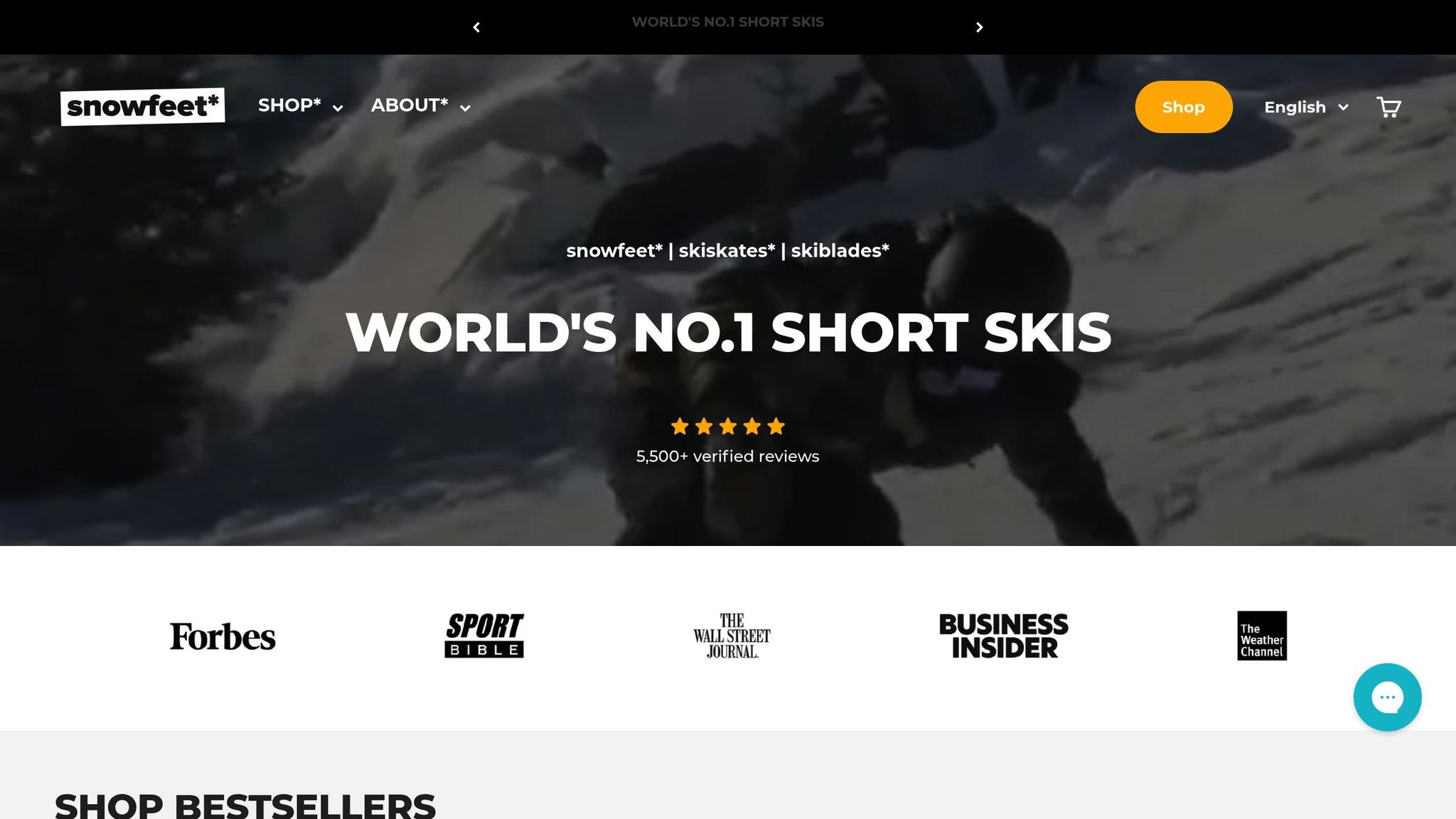
When you think of traditional long skis, stability and length come to mind. They’re designed for skiers who have the skills to handle their demands. On the other hand, Snowfeet* skiblades and skiskates bring a playful, agile twist to the slopes, offering an entirely different experience.
Performance and Flexibility
Here’s how they stack up:
| Feature | Traditional Long Skis (160–180 cm) | Snowfeet* Skiblades (65–120 cm) | Snowfeet* Skiskates (44 cm) |
|---|---|---|---|
| Maneuverability | Requires more effort and skill | Easy to turn and control | Extremely agile for quick moves |
| Learning Curve | Takes time to master | Beginner-friendly | Simplest to pick up |
| Speed Control | Stable at high speeds | Allows safer, controlled turns | Moderate speed, easy to manage |
| Terrain Versatility | Ideal for wide, open slopes | Handles tight, technical trails well | Works across various terrains |
| Physical Demand | High energy needed | Moderate effort required | Low physical strain |
Snowfeet* products excel in areas where long skis can feel clunky, like tight turns or tricky terrain. Their compact design lets you pivot and maneuver with ease, making them a great choice for skiers looking for something nimble. Plus, they come with an added bonus: they’re super travel-friendly.
Portability and Travel Convenience
One of the biggest headaches with traditional skis is their size. At 160 cm or longer, they’re tough to transport without roof racks or special carriers. Snowfeet* models? They flip the script. The longest skiblades are just 120 cm and can fit into standard luggage. Skiskates, at only 44 cm, can slide right into your backpack. This makes them ideal for backcountry adventures - no more wrestling with bulky gear on hiking trails or cramped buses. They’re not just easier to carry; they make your whole skiing experience smoother and more enjoyable.
Fun Factor and Accessibility
The fun really kicks in when you hit the slopes with Snowfeet*. Their lightweight, compact designs let you explore off-piste terrain effortlessly, something traditional skis struggle to match. And because they’re built to make falling less intimidating than with long skis or snowboards, they’re perfect for building confidence. Beginners, seasoned skiers, and even families can enjoy them together.
"Nice and mobile, comfortable and it’s truly a lot of fun, I can seriously recommend them to anyone." - Niels Staal
With options ranging from 44 cm skiskates to 120 cm skiblades, Snowfeet* gives you room to grow. Whether you’re just starting out or looking to push your limits, there’s a model that fits your style and goals. It’s all about making skiing more accessible, fun, and tailored to YOU.
sbb-itb-17ade95
Choosing the Right Snowfeet* Product for Your Freeride Goals
Snowfeet* offers a range of options to match your skill level, terrain preferences, and need for portability. Let’s break down which product is the best fit for your freeride adventures.
Snowfeet* Skiblades (65, 99, and 120 cm): Features and Benefits
Snowfeet* Skiblades are available in three lengths, catering to different experience levels and terrain types. They’re a great way to build your skills and confidence as you progress.
65 cm Skiblades
These are perfect for beginners. Their short length makes them easy to control, especially on gentle slopes and in tight spaces. If you’re just starting out and want to focus on mastering quick, controlled turns, this is your go-to option.
99 cm Skiblades
If you’re an intermediate skier, the 99 cm Skiblades hit the sweet spot. They’re long enough to handle varied terrain but still compact enough to maintain agility. Whether you’re tackling moderate slopes or exploring off-piste conditions, these skiblades offer the versatility you need as your skills improve.
120 cm Skiblades
Advanced skiers looking for speed and stability will appreciate the 120 cm Skiblades. While shorter than traditional skis, they provide enough surface area for powder and steep descents. These are designed for those who want to push boundaries on bigger slopes while enjoying a playful, responsive ride.
| Skiblade Length | Best For | Terrain |
|---|---|---|
| 65 cm Skiblades | Beginners, confidence building | Gentle slopes, tight spaces |
| 99 cm Skiblades | Intermediate skiers, skill development | Mixed terrain, moderate slopes |
| 120 cm Skiblades | Advanced skiers, performance focused | Steep slopes, powder, high-speed runs |
For those prioritizing portability, the compact Snowfeet* Skiskates might be a better fit.
Snowfeet* Skiskates (44 cm): Compact and Ultra-Portable
At just 44 cm, Snowfeet* Skiskates are all about convenience and portability. They combine skiing and skating movements, giving you a unique way to explore the slopes. Built with a cap construction and wood core, they offer a more traditional ski-like feel compared to other compact models.
These skates are ideal for backcountry explorers who need gear that fits in a backpack. They’re perfect for reaching remote spots where carrying full-sized skis would be a hassle. While they’re fun on slopes, keep in mind that there’s a bit of a learning curve - especially if you’re new to skating. Once you get the hang of it, though, they provide unmatched freedom and versatility.
Binding Options and Sizing Guidance
Bindings play a crucial role in your setup, and Snowfeet* makes it easy to find the right fit.
Snowfeet* Skiblades come with built-in snowboard-style bindings that work with ski boots, snowboard boots, or even regular winter boots. This compatibility removes the hassle of mounting and ensures you’re ready to hit the slopes straight out of the box.
For Skiskates, there are two binding versions: one for ski boots and another for snowboard boots. This flexibility means you can use the gear you already own - no need to buy new boots specifically for your setup.
When adjusting bindings, remember that U.S. and European sizing standards differ. Take the time to measure your boots and fine-tune the bindings at home using a simple screwdriver. This DIY adjustability not only saves you a trip to the ski shop but also ensures maximum comfort and performance on the mountain.
The ability to use regular winter boots and adjust bindings at home makes Snowfeet* products accessible for everyone, from casual skiers to families with varying levels of experience.
Practical Tips for First-Time Freeride Ski Buyers
If you're ready to dive into freeride skiing with Snowfeet*, these tips will help you get started and make the most of your experience. From adjusting your technique to picking the right gear, here's what you need to know.
Adjusting Technique for Short Skis
Using Snowfeet* Skiblades or Skiskates is a bit different from skiing with traditional long skis. Thanks to their shorter length and lighter weight, beginners often find them easier to handle. But they do require some adjustments to your technique.
Master Your Stance
Stand upright with your weight centered and slightly shifted back. Keep your legs about shoulder-width apart, with one foot slightly ahead for better balance. This stance is key to staying steady on shorter skis.
Focus on Edge Control
The metal edges on Snowfeet* skis are your best friends when it comes to carving turns and controlling your speed. Use them effectively, and when stopping, distribute your weight evenly across both feet for better stability.
Start on Easy Terrain
Begin on gentle, groomed slopes to get a feel for the skis. On flat, snowy ground, practice a skating motion - think of how hockey players move. This helps you get comfortable with the unique movement of shorter skis. Stick with it, and you'll build both skill and confidence in no time.
Once you've nailed the basics, it's time to focus on the gear that will support your progress.
Choosing Durable, High-Quality Equipment
Snowfeet* gear is crafted in Europe and built to meet strict quality standards, ensuring it performs well and lasts through your adventures. Here's what to look for:
Quality Materials
Snowfeet* products are made with fiberglass-reinforced materials and feature metal ski edges. The Skiblades, for example, are even handcrafted from certified sustainable wood, offering durability and performance you can count on.
Steer Clear of Counterfeits
Counterfeit products often lack key features like metal edges, which can compromise durability. To ensure you're getting the real deal, buy directly from Snowfeet*'s official site or authorized retailers like Amazon. When your gear arrives, check for sturdy topsheets, reinforced edges, and a responsive core.
Pick the Right Bindings
Snowfeet* offers three binding options, each catering to different needs:
- Basic Bindings: Budget-friendly and compatible with most boots, though they may not fit larger snowboard boots.
- Standard Bindings: A step up, with an extra strap for a better fit on bigger boots.
- Pro X Bindings: The most durable and adjustable option, designed to fit any boot comfortably.
Prices for Snowfeet* gear reflect their quality: Skiskates start at $390.00, 65 cm Skiblades at $450.00, and 99 cm Skiblades at $490.00.
With the right equipment in hand, a few accessories can make your freeride skiing experience even better.
Improve Your Experience with Accessories
Little things can make a big difference when you're on the slopes. Here are a few accessories to consider:
Wax for Better Glide
Regularly waxing your skis keeps them speedy and prevents snow buildup. It's similar to maintaining a skateboard - simple but effective for improving performance.
Poles for Extra Support
While not a must-have, poles can help beginners maintain balance and speed, especially on uneven or choppy snow.
Ankle-Supportive Footwear
Short skis require quick directional changes, so high, rigid boots are essential to protect your ankles. Snowboard bindings offer more flexibility and comfort, but make sure your boots provide enough support for those sharp turns.
Safety Comes First
Snowfeet* bindings are non-release, which means they stay attached even during falls. Safety leashes are included to keep your skis secure - use them, especially while you're still mastering your technique.
Snowfeet* founder Zbyněk sums it up perfectly:
"In my opinion, Skiskates is the best product for slopes we developed so far. I love how easy they are to ski and skate and how many different kinds of tricks I can perform without much effort and almost no restrictions."
With an average customer rating of 4.9 to 5.0 stars, Snowfeet* combines European craftsmanship with smart design, making it a solid choice for your first freeride skiing setup.
Conclusion: Why Snowfeet* Is a Game-Changer for Freeride Enthusiasts
Snowfeet* stands out from traditional long skis like Rossignol or Atomic by offering unmatched maneuverability, portability, and pure fun. It’s a no-brainer for anyone looking to spice up their time on the slopes. Whether you're weaving through tight trees or packing light for a weekend trip, Snowfeet* makes it all easier and more exciting.
Let’s talk numbers. Standard skis are typically 150–200+ cm long and require bulky, awkward bags to transport. In contrast, Snowfeet* products range from just 44 cm to 120 cm, small enough to fit in your backpack. That means no more hassle with roof racks or oversized gear bags - just grab your Snowfeet* and go.
What sets Snowfeet* apart is its smart design and versatility. These products are built tough for off-piste adventures, handling everything from groomed trails to deep powder with ease. Plus, they’re compatible with regular winter shoes, snowboard boots, or ski boots. No need to invest in extra gear - just use what you already have and hit the slopes.
Freeriders who’ve made the switch rave about how Snowfeet* makes skiing more accessible and fun. They love the freedom to explore tight terrain, the thrill of discovering new areas, and the confidence that comes with lighter, easier-to-manage equipment. Snowfeet* isn’t just about performance - it’s about redefining what’s possible in freeride skiing.
If you’re ready to try something new, check out the 44 cm Skiskates for $390 or the 99 cm Skiblades for $490. Both options deliver incredible portability and ease of use, making them perfect for anyone looking to take their off-piste adventures to the next level.
The future of freeride skiing is here, and it’s shorter, lighter, and way more fun. Snowfeet* is leading the charge - are you ready to join in?
FAQs
What makes Snowfeet* Skiblades and Skiskates better than traditional long skis for off-piste skiing?
Snowfeet* Skiblades and Skiskates offer a fun twist on traditional long skis, especially for off-piste adventures. Thanks to their compact size and lightweight build, they’re super easy to carry around. Whether you're hiking to hidden trails or packing for a ski getaway, these are a breeze compared to lugging around bulky long skis. Convenience is the name of the game here.
Their shorter length also makes them incredibly maneuverable, giving you the ability to make quick turns and handle uneven terrain with ease. This agility makes them a great choice for freeride skiing, where sharp moves and quick reactions are everything. Plus, beginners will love how easy they are to pick up - offering a fun, playful ride without the steep learning curve of traditional skis.
If you want something that's simple to use, easy to pack, and perfect for off-piste fun, Snowfeet* Skiblades and Skiskates are worth checking out!
What’s the best Snowfeet Skiblade length for my skill level and the terrain I want to ski on?
Choosing the right Snowfeet Skiblade length comes down to your skill level and the type of skiing you’re into. If you’re a beginner or planning to stick to gentle slopes and tighter spaces, the 65 cm Skiblades are a great pick. Their shorter length makes them super easy to maneuver.
For intermediate skiers who want something versatile - whether you're cruising mixed terrain or tackling moderate slopes - the 99 cm Skiblades strike a nice balance between control and adaptability.
Now, if you’re an advanced skier chasing speed and stability on steep runs, the 120 cm Skiblades are where it’s at. They’re built for superior control and a smoother ride when things get intense.
When deciding, don’t forget to factor in your height, weight, and what you want to get out of your skiing experience. Snowfeet Skiblades are all about blending portability and performance, offering a freeride vibe that traditional long skis just can’t replicate.
What adjustments should I make when switching from traditional skis to Snowfeet Skiblades or Skiskates?
Switching from long skis to Snowfeet Skiblades or Skiskates takes a bit of adjustment, but it’s well worth the effort. These shorter skis are compact and lightweight, which means you’ll need to tweak your technique to get the most out of them. Start by keeping your weight centered - this helps with balance and gives you better control. You’ll also want to adopt a slightly more upright stance than you’d use with traditional skis.
When it comes to turning, aim for smooth, controlled movements. The shorter length makes it easier to pull off quick, precise turns, so take advantage of that. And here’s a bonus: Snowfeet gear is super portable, which means less hassle carrying them around when you're not on the slopes. Give yourself a bit of time to get used to the feel, and soon you’ll be zipping through freeride terrain and off-piste trails with ease. These little skis pack a lot of fun into a small package!







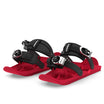
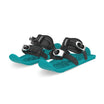












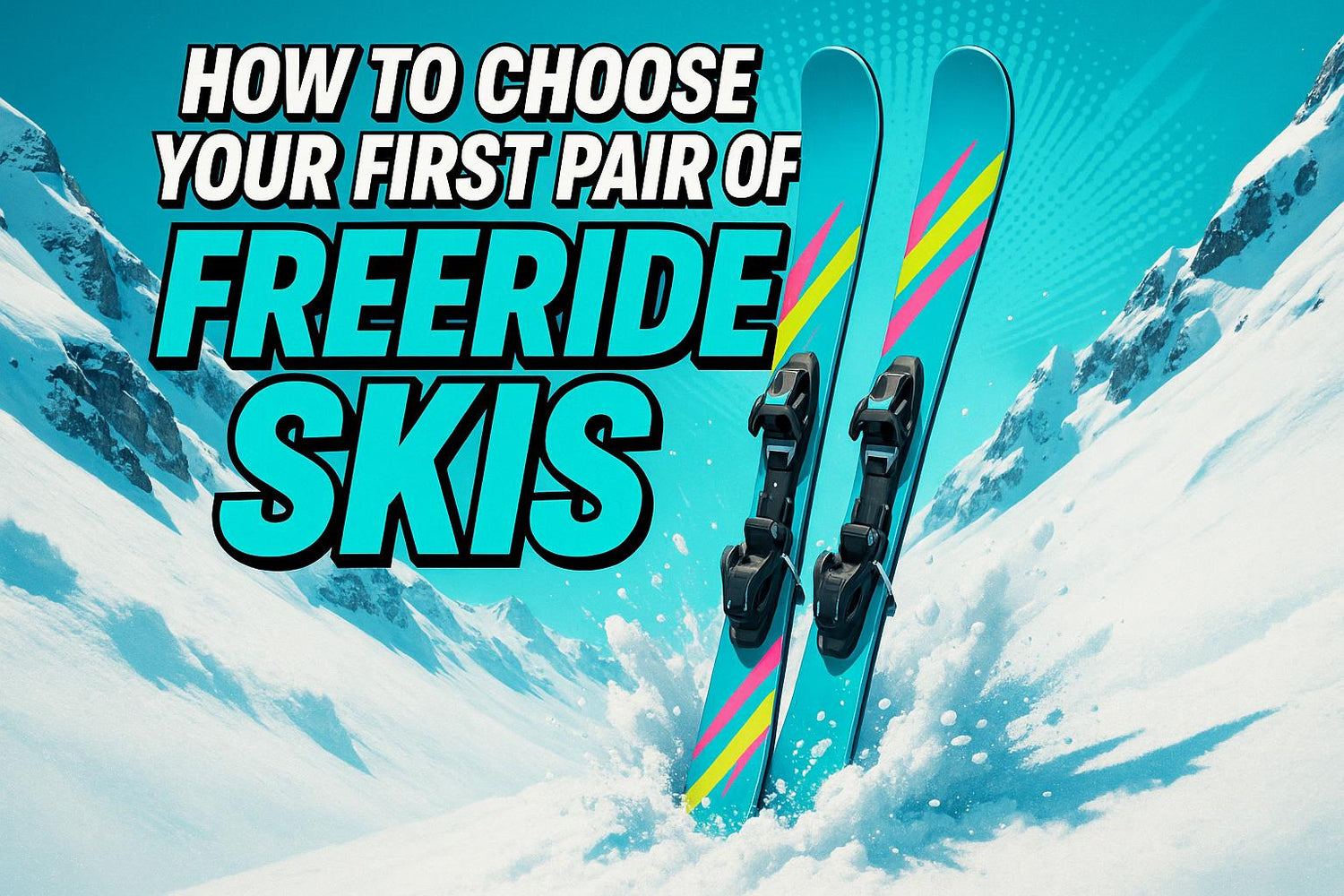




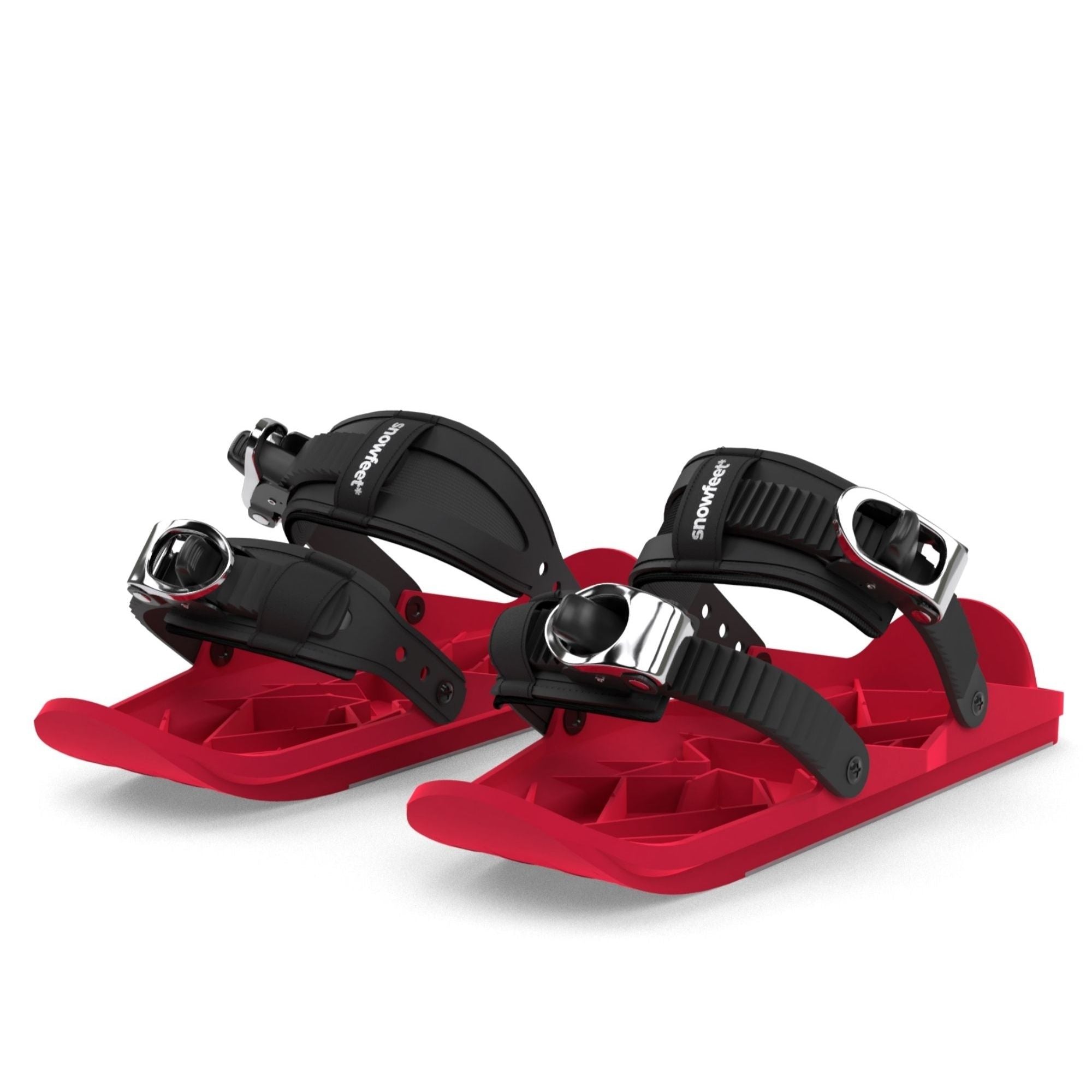
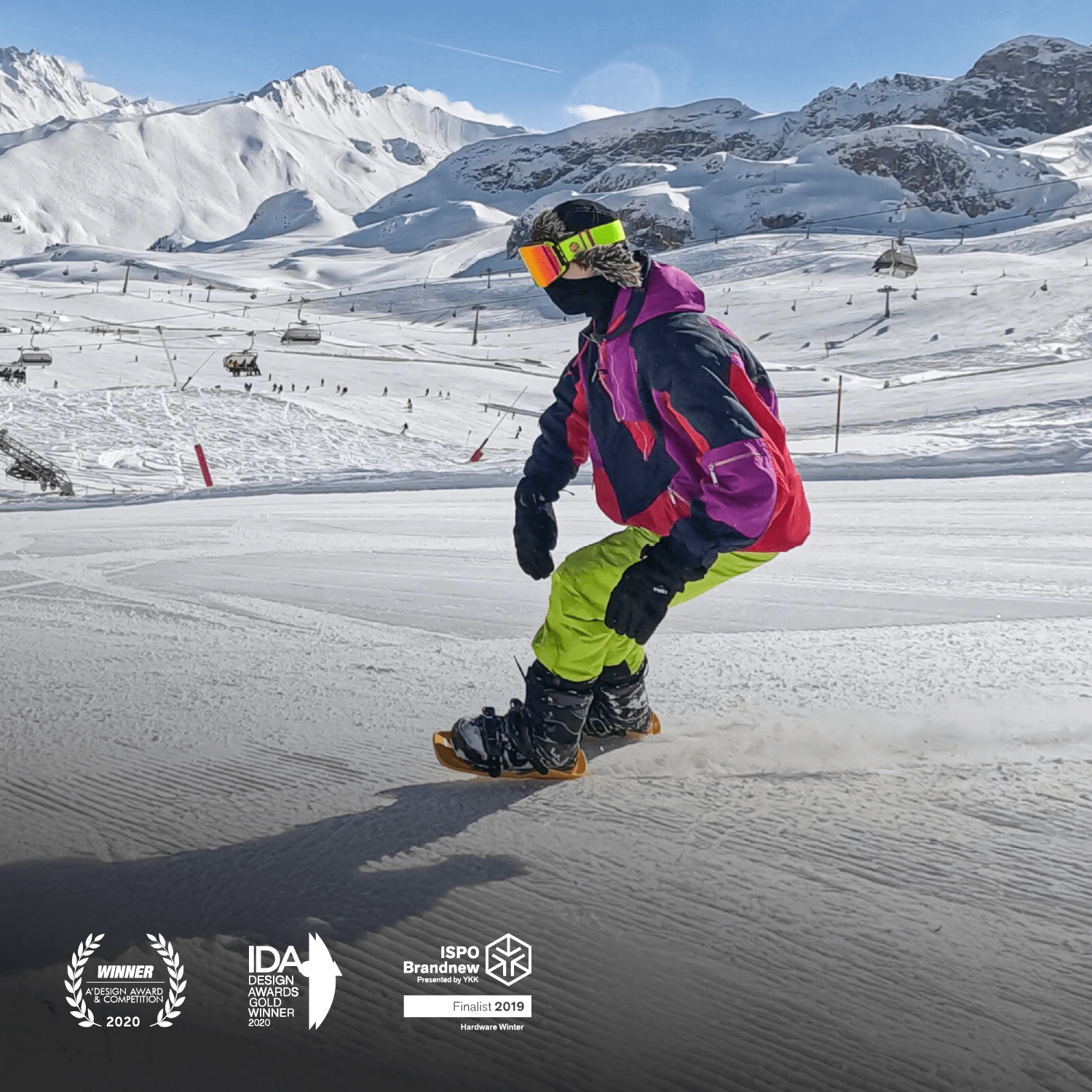




Leave a comment
This site is protected by hCaptcha and the hCaptcha Privacy Policy and Terms of Service apply.